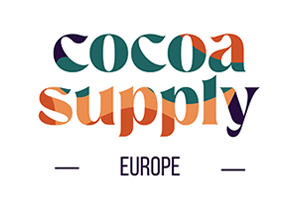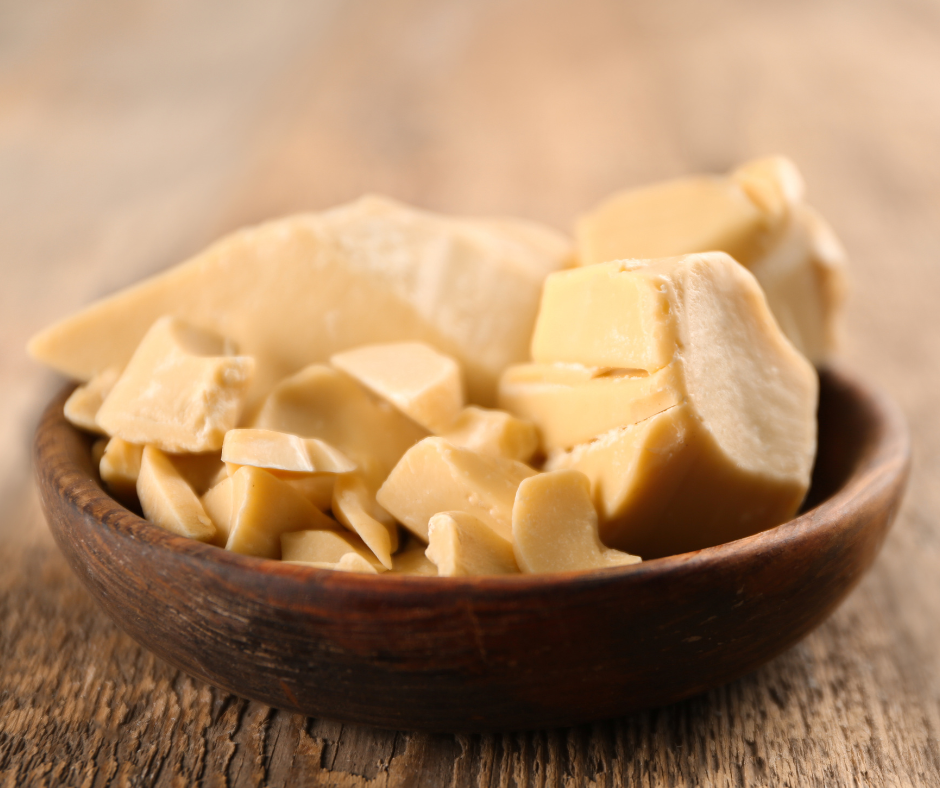Cacao butter is versatile, stable, and naturally long-lasting. It melts beautifully and delivers the most delicious texture everybody loves. But, there are a few things makers should know regarding how heat, transport, and humidity affect cacao butter, which we’ll explore in this blog.
What Exactly is Cacao Butter?
Cacao butter is the fat from the cacao bean. It gets pressed from cacao paste, which is fermented and ground cacao beans. It is sold as either natural pure prime pressed, which is aromatic and untouched after pressing, or as deodorized. Deodorized cacao butter is the option customers choose when they don’t want that strong, chocolate aroma. The deodorization process that we use at Cocoa Supply is a counter-current steam, which simply removes most of the aroma without altering the product. No bleaching agents or chemicals of any kind are used.
High Oxidative Stability
One of the best things about cacao butter is that it has a long shelf-life. It resists spoilage much better than most plant-based oils, which go rancid quickly due to their high polyunsaturated fatty acid content (PUFAs). These fats have multiple double bonds in their structure which are unstable. That means that when they’re exposed to oxygen, heat, light, etc., they begin to break down. You can easily recognize that unpleasant “old oil” smell with many of these fats. Cacao butter is very different. It’s made up of about 60% saturated fat (mostly stearic and palmitic acids) and 33% monounsaturated fat (mostly oleic acid), they are much more stable because they have fewer or no double bonds. The slower the oxidation, the longer the shelf life.
That’s not all, though. Cacao butter also contains antioxidants, which as the word itself explains, reduces oxidation even more. It has tocopherols like Vitamin E, and small amounts of polyphenols. They help neutralize free radicals.
Between the stable fat profile and the extra antioxidant protection, cacao butter resists spoilage much better than most other plant-based fats. But, although it can last a long time, factors like humidity, heat, and exposure to odors can still affect the product.
What Affects Cacao Butter the Most
1. Heat
Cacao butter melts at around 34 degrees Celsius (93 degrees Fahrenheit), so it can easily melt in hot climates and re-solidify, which although it doesn’t ruin the fat, could end in texture issues when dealing with final products.
It is best to always store cacao butter and final products in a cool, stable area (between 15 and 20 degrees Celsius/ 59 to 68 degrees Fahrenheit). Too much temperature swings could result in crystallization changes.
2. Humidity
Although cacao butter doesn’t absorb water, high humidity can still affect it. Moisture can cause clumping and texture changes, and visible blooming can occur from condensation.
Always seal cacao butter tightly, especially in humid areas.
3. Strong Odors
Unrefined cacao butter can easily absorb strong odors from its environment. You certainly do not want to store it next to garlic or cleaning products! If you’re working in a small kitchen, use airtight food-safe containers to avoid this issue.
What About Freezing?
Freezing cacao butter is not recommended. The thawing process can cause condensation, cosmetic changes and uneven textures. When it comes to food applications, it is best to store in cool areas, not cold areas.
What Cacao Butter Should Look Like
Natural pure prime pressed cacao butter should have a chocolatey smell to it. Deodorized cacao butter should have a neutral smell. It should always be solid at room temperature, and easily sliceable. Its surface should be smooth and even, although minor blooming is harmless. It should never smell musty. Remember, since cacao butter has such a high oxidative stability, it’s more likely that it will pick up odors from its environment than actually going bad on its own.
Different Textures Around the World
Have you noticed that some countries offer harder chocolate bars than others? It is very common to find chocolate bars that are very firm in tropical countries like Ecuador, whereas you’ll find softer ones in cooler countries. That’s because some makers prefer to use less cacao butter to avoid melting in extreme heat, whereas in cooler countries you can afford to offer smoother bars with a higher cacao butter content.
How to Best Store Cacao Butter
Here is how to best protect cacao butter for the long-term:
-
Store it between 15 and 20 degrees Celsius (59 to 68 degrees Fahrenheit).
-
Use air-tight food-safe containers if your area is small.
-
Avoid exposure to strong odors, moisture, or heat sources.
-
If you purchase cacao butter in bulk but work with small amounts at a time, we suggest dividing it into smaller sealed portions once opened, to minimize air and light exposure, as well as cross-contamination with other ingredients.
-
Test your tempering and packaging protocols if you’re shipping your final products to hot climates.
Cacao butter is resilient, but not invincible. It’s important to know how to best work with high-value ingredients to reach the best possible results!

